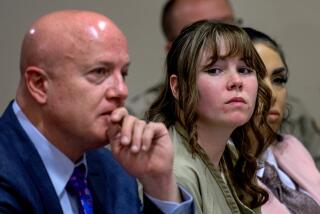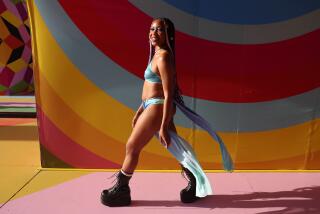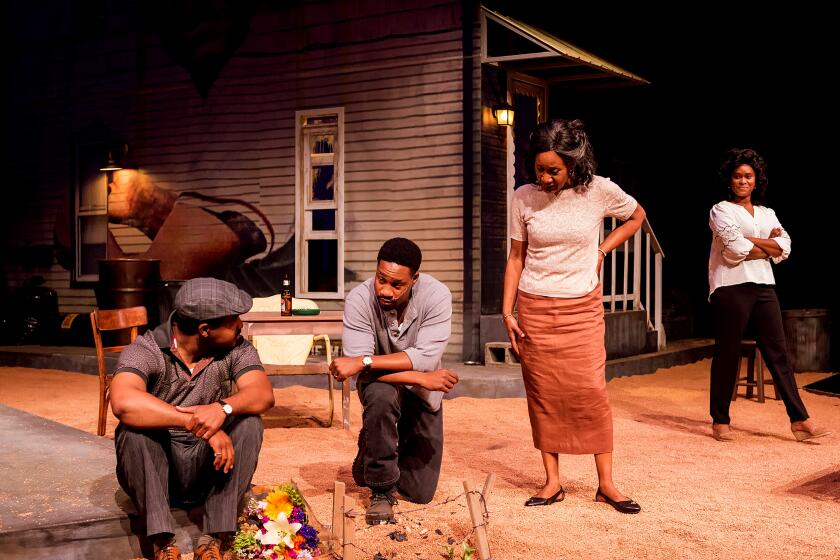The ‘60s, now
On May 2, 1971, about 200 uniformed police surrounded the perimeter of Exposition Park while 30-odd plainclothes officers circulated through the crowd as farm labor leader César Chávez delivered a brief but impassioned speech decrying the Vietnam War at a rally sponsored by the People’s Coalition for Peace and Justice.
According to The Times’ report, the formidable presence of law enforcement was perhaps unwarranted: No incidents or arrests were reported at the gathering, where Chavez’s speech was preceded by a memorial service honoring those killed Vietnam.
At 6 p.m. today in Exposition Park, Chavez’s speech will be heard again -- this time delivered by UC San Diego visual arts assistant professor Ricardo Dominguez. The event most likely won’t be patrolled by 230 police officers. Nor will celebrity activists Jane Fonda and Donald Sutherland be on hand, as they were in 1971.
But the artist responsible for staging the re-creation, Mark Tribe, hopes that reanimating the words of Chavez almost 40 years later will enable the Internet generation to experience “what it would feel like to believe you were part of a movement that would change history.”
Chavez’s 1971 speech was part of a week of nationwide antiwar activities; the 2008 event in Los Angeles, titled “We Are Also Responsible,” is the fourth installment of the Port Huron Project, Tribe’s series of reenactments of Vietnam-era speeches on the sites of the original addresses.
The series -- which since 2006 has staged a 1968 Coretta Scott King speech in New York City’s Central Park, a 1971 address by author and activist Howard Zinn in Boston, and a speech given by Paul Potter, former president of Students for a Democratic Society at the 1965 March on Washington -- takes its name from the Port Huron Statement, the manifesto of the Students for a Democratic Society, written at an early 1960s group meeting in Port Huron, Mich.
Creative Time, a nonprofit organization that commissions and presents public arts projects, will present the Los Angeles speech as well as the final two series installments, an Aug. 2 restaging of a 1969 Angela Davis speech in Oakland’s DeFremery Park, and on Sept. 7, the reenactment of a 1976 speech by Stokely Carmichael in New York City. The Exposition Park presentation is co-sponsored by Los Angeles Contemporary Exhibitions (LACE).
Tribe, 41, an assistant professor of modern culture and media at Brown University, said that talks with his students inspired the project. “I was struck by the apparent apathy of my students,” he said. “But as I spoke to them, I realized they weren’t apathetic at all, that in fact they cared very deeply, for example, about the war in Iraq, but they seemed to believe that resistance is futile.”
For some students, he said, that feeling of helplessness stems from watching the mass protests of the Iraq war in the United States and in London in 2003. “There were something like a million people on the march in London, hundreds of thousands of people in American cities,” Tribe said, “and the Bush administration and the Blair administration didn’t seem to blink.”
He added that Vietnam-era speeches cannot help but resonate in the face of the Iraq war. “There is a sense of historical vertigo almost -- you know you’re hearing a speech that you know was written in 1968 but sounds as if it was written yesterday,” he said.
Although Tribe says he is not trying to sway the vote in the presidential election, he hopes the reenactments will inspire ‘60s-style grass-roots action, such as neighborhood meetings as well as online networking.
Montebello attorney Armando Duron, 53, president of East Los Angeles’ Self Help Graphics & Art, has spent most of his life in Los Angeles and has been a Chicano affairs activist since he was 16. Duron was among those tapped when Tribe held a community meeting in L.A. in June as project research.
“I wasn’t at the original event, and it wasn’t like I was his buddy or anything like that,” Duron said of Chavez. “But I was certainly around the movement for years, and I was one of the 35,000 people at his funeral. He was so influential for the urban Chicanos at that time, for many reasons; it is special for us in that sense.”
Tribe said he sees the project more as visual art rather than theater because videotapes of the piece are intended for distribution on the Internet or to art galleries on a screen or as a video installation.
He added that the actors delivering the historical speeches will not wear period clothes or attempt to imitate the original speakers.
“As an art project, it does tread the line in an interesting and ambiguous way between performance art and political protest,” Tribe said. “It’s an ancient debate in a way, the relationship between art and politics, and this is kind of my way as an artist to play a part in the political transformations that we are witnessing in America right now.”
Rita Gonzalez, assistant curator of special exhibitions at the Los Angeles County Museum of Art and one of the curators of the museum’s exhibition “Phantom Sightings: Art After the Chicano Movement,” participated in the community discussions and said artists of Tribe’s generation, the children of the activists of the 1960s and ‘70s, want to engage their parents’ history in their own art.
“There are a lot of portals into that history -- an archival approach, an approach through narrative, or this interest in reenactment,” Gonzalez said. “It’s interesting to see how these events take place outside of the ‘white cube.’ ”
--
More to Read
The biggest entertainment stories
Get our big stories about Hollywood, film, television, music, arts, culture and more right in your inbox as soon as they publish.
You may occasionally receive promotional content from the Los Angeles Times.






